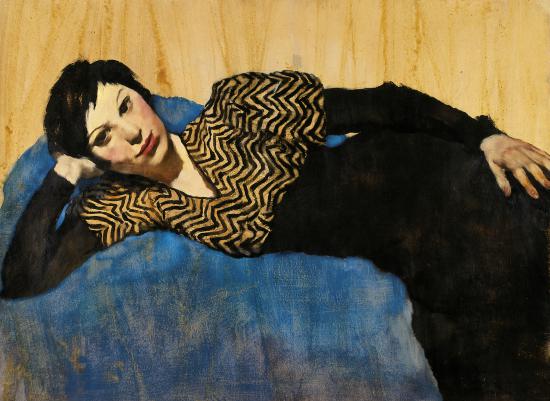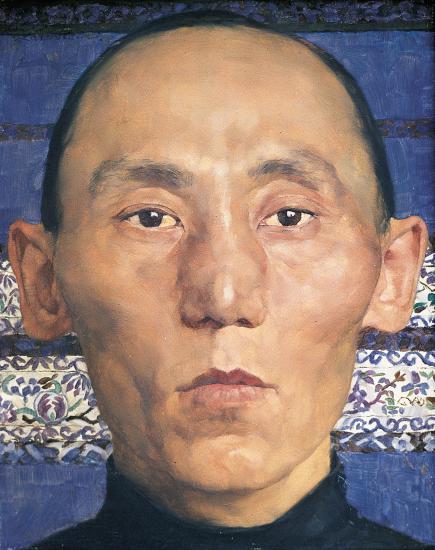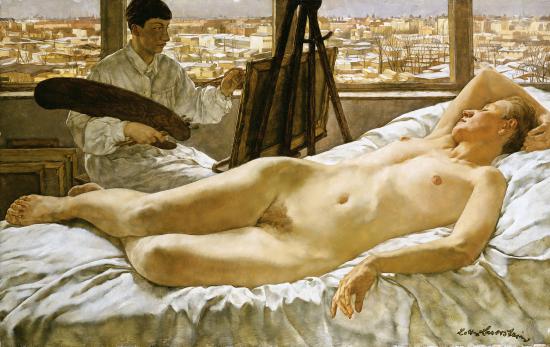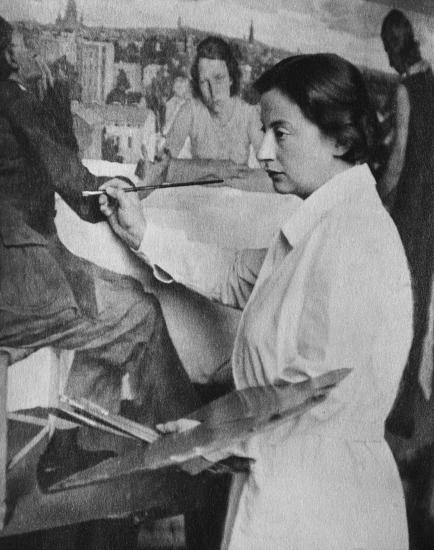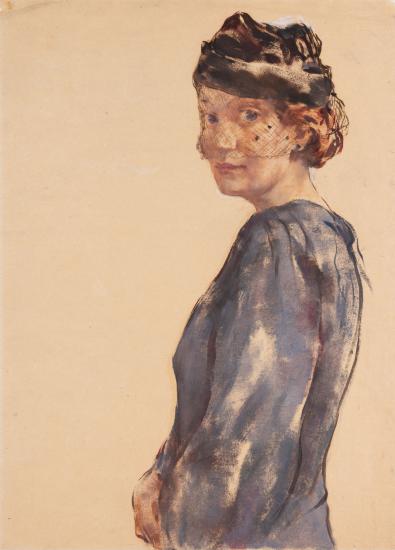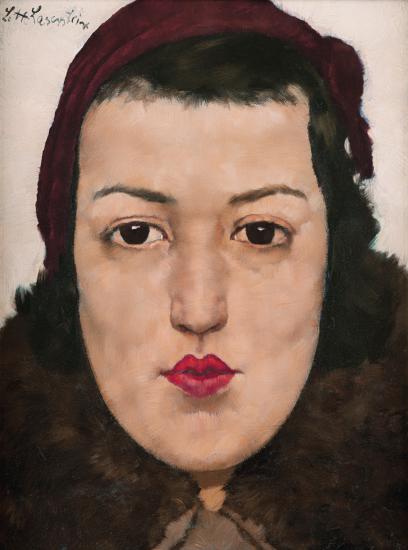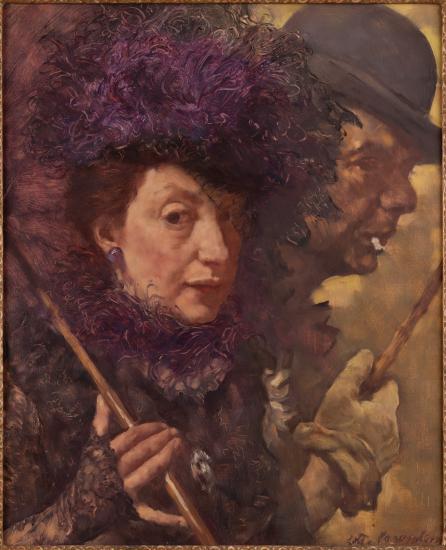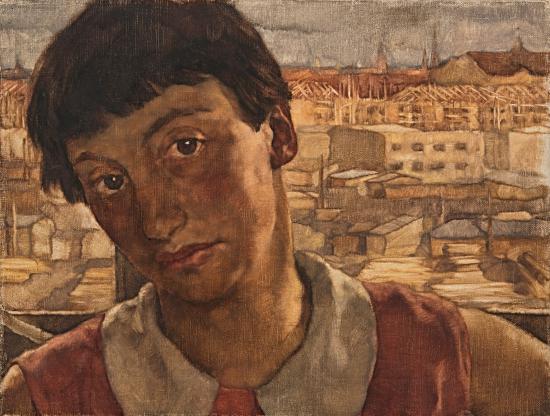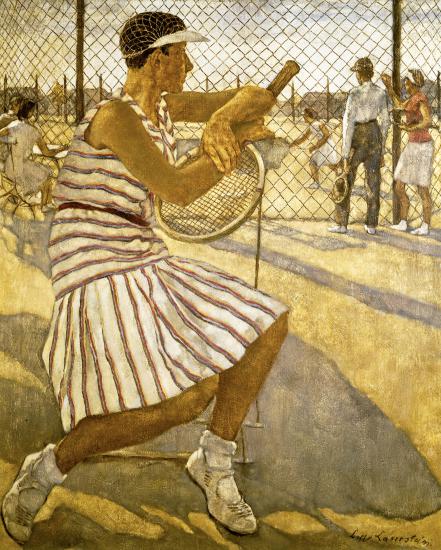Städel Museum)
19 September 2018 to 17 March 2019
After its launch at the Städel Museum in Frankfurt am Main, the exhibition will travel to the Berlinische Galerie, where it will be complemented with, among others, works created by Lotte Laserstein while in exile.
After its launch at the Städel Museum in Frankfurt am Main, the exhibition will travel to the Berlinische Galerie, where it will be complemented with, among others, works created by Lotte Laserstein while in exile.
Image may be NSFW.
Clik here to view.
Clik here to view.

From 19 September 2018 to 17 March 2019, the Städel Museum in Frankfurt am Main presents a comprehensive solo exhibition with works by the painter Lotte Laserstein (1898–1993). Laserstein’s oeuvre is one of the great recent art historical rediscoveries and features sensitive and compelling portraits from the final years of the Weimar Republic. The exhibition builds upon works from the collection of the Städel Museum, which in the past few years was successful in acquiring important works by the artist, including the paintings Russian Girl with Compact from 1928 (above)
Image may be NSFW.
Clik here to view.

and Boy with Kasper Puppet (Wolfgang Karger) from 1933. With approximately forty paintings and drawings, the exhibition focusses on Laserstein’s artistic development. Emphasis is placed on works from the 1920s and 30s, which mark the peak of her artistic work. “Lotte Laserstein. Face to Face” is the artist’s first solo exhibition in Germany outside of Berlin.
“The child portrait Boy with Kasper Puppet (Wolfgang Karger) was the first new acquisition since my appointment as Director of the Städel Museum, and the work of Lotte Laserstein in general has accompanied me both personally and professionally for many years. I am thus all the more pleased that our exhibition will provide an opportunity to take a fresh look at the work of this important painter and introduce her to a wider audience,” Städel director Philipp Demandt comments on this exhibition project which he initiated.
The painter Lotte Laserstein made a name for herself in the pulsating city of Berlin during the Weimar Republic more than anything else through portraits of her contemporaries. In her paintings, the artist depicted the life in Berlin that surrounded her, focusing on representations of the so-called “New Woman” and captured her pictorial motifs from a decidedly female perspective. She participated in numerous exhibitions and competitions and was highly praised by art critics.
Following this early recognition, however, her career ended abruptly: Due to the political conditions under National Socialism, the painter, who was a baptised Christian but declared Jewish due to her grandparents, was increasingly excluded from the public cultural scene. In 1937, she managed to leave Germany and emigrate to Sweden, where, however, she was not able to recapture her early success. Cut off from the international art scene, her work faded to a large extent from public view. It was not until 2010 that Laserstein once again became the focus of attention with the purchase of one of her major works by the Nationalgalerie in Berlin, Evening over Potsdam from 1930, which is also included in the Frankfurt exhibition.
“Lotte Laserstein shares the fate of many of her contemporaries, who began to build a reputation during the Weimar Republic, but whose artistic careers were severely curtailed by the Nazi system. She can be included among the so-called “Lost Generation”, since her realistically painted images were neglected by post-war research orientated toward the avant-garde. It is only since the 1990s that this extraordinary artist has received belated recognition, to which our exhibition can make a crucial contribution”, the curators of the exhibition, Alexander Eiling and Elena Schroll, emphasise.
Style and Motifs
Laserstein’s paintings stand in close stylistic proximity to the New Objectivity, but they do not quite fit into this art historical category. Although there are similarities to this art movement in terms of subject matter and attitude in the painter’s works, Laserstein’s style of painting is neither objectively undercooled nor socially critical, as is typical of the New Objectivity. Her painting style always remains realistic, with a partially late-Impressionistic, loose brushstroke and a carefully composed pictorial composition. Overall, the influence of her academic education – to which women had only just begun to gain access – is clearly recognisable in her works, which is why her style can be described as academic realism. Although traditional with regard to technique, her pictures were of great topicality in terms of content.
Lotte Laserstein’s favoured subject is the human being in all its many facets, which is why she devoted herself primarily to portraiture. In her portraits, she brilliantly depicts the people of the interwar period, such as in
'
Girl Lying on Blue (1931)
or The Mongolian (1927), whereby her works are characterised by sobriety, modernity and psychological depth. In her oeuvre, there are also motifs that speak of the enthusiasm of the time for technology and sports, although these are much fewer in number.
In her portraits, Laserstein paints types from modern everyday life: athletic women, young girls putting on make-up, a motorcyclist in full gear and fashionably dressed city dwellers. The artist plays with quotes from art history and often incorporates reflections and duplications of figures. She frequently paints complex compositions, in which she also depicts herself painting in the studio to refer to her role as an academically trained artist. Furthermore, with her fashionably dressed protagonists, Laserstein drafts a type of emancipated urban woman who moves freely and confidently in the public sphere without male accompaniment. This contemporary image of the “New Woman” is of particular interest to her. Portraits of women thus comprise the greater part of her artistic production, and rarely does she paint portraits of men.
Her Model Traute Rose
In addition to herself and professional models at the academy, Laserstein repeatedly portrays her long-time muse and friend Gertrud Rose (née Süssenbach), called Traute, who embodies the type of the “New Woman” as it was downright propagated in the media during the interwar years, and is thus an ideal model. Rose – like Laserstein herself – corresponds to the ideal of the times: an androgynous, athletic, emancipated young lady with bob and loose-fitting clothes. In her portraits, Rose appears as a tennis player, occasionally in double portraits alongside the artist or as a nude model in the context of the studio. In contrast to conventional representations of female models by male artists, in which the woman becomes an objectified vis-à-vis of the painter, Laserstein’s paintings testify to the close relationship between the two friends, which was based on trust and equality.
This is particularly evident in At the Mirror (1930/31)
and In My Studio (1928), in which Rose is depicted nude and Laserstein in the role of the painter. Especially these nudes have repeatedly led to the assumption among scholars of a homosexual love relationship between the two women, for which there are, however, no biographical indications. Laserstein maintained a close, lifelong friendship with Traute Rose, who remained in Germany, and the two corresponded extensively during the artist’s time in Sweden.
Biographical Details
Lotte Laserstein, born in East Prussia in 1898, grew up in a bourgeois environment. After the premature death of her father, her mother moved with her and her younger sister Käte to their widowed grandmother in Gdansk. She received her first drawing lessons in 1908 from her aunt Elsa Birnbaum, who ran a private painting school. From 1921 to 1927, she attended the Berlin Academy of Fine Arts, where she was one of the first women to complete her master studies. Through her participation in the spring exhibition of the Prussian Academy of Arts in 1928, she received widespread recognition and sold her first work to a public institution, namely the Berlin City Council.
Image may be NSFW.
Clik here to view.
Image may be NSFW.
Clik here to view.

The painting In the Tavern (1927) was later confiscated as “degenerate art” within the context of National Socialist propaganda.
Since the late 1920s, Laserstein participated regularly in various exhibitions. She soon succeeded in building a reputation, and the arts pages and critics wrote downright eulogistically about her art. In 1928, Laserstein participated in the competition “The Most Beautiful German Portrait of a Woman”, organized by the cosmetics company Elida in cooperation with the Reich Association of Visual Artists. Out of the 365 works submitted, the painting Russian Girl with Compact, (above)
now in the collection of the Städel Museum, was nominated for the final round and exhibited together with twenty-five works by almost exclusively male artists in the prestigious gallery of Fritz Gurlitt in Berlin, where her first solo exhibition also took place in 1931.
After the seizure of power by the National Socialists, Laserstein’s nascent career ended abruptly. She was dismissed from the board of the Association of Berlin Women Artists and was only able to exhibit in 1935 within the frameworks of the Kulturbund Deutscher Juden (Cultural League of German Jews). The small painting school, which she had run for financial security since 1927, was also forced to close. Political restrictions made her living and working conditions increasingly difficult. An exhibition in the Galerie Moderne in Stockholm in 1937 offered her the opportunity to leave Germany. Although Laserstein remained extremely productive in Swedish exile and made her living through commissioned work, she was unable to recapture her early success, and her work largely disappeared from public perception.
In Germany, Laserstein was rediscovered in 2003 through the exhibition “Lotte Laserstein. My Only Reality”, curated by Anna-Carola Krausse for Das verborgene Museum in cooperation with the Stiftung Stadtmuseum Berlin in the Museum Ephraim-Palais. In 2010, the Nationalgalerie in Berlin, with the support of the Cultural Foundation of the German Federal States, acquired Laserstein’s monumental key work
Image may be NSFW.
Clik here to view.
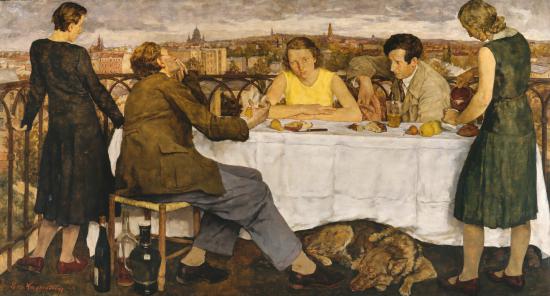
Lotte Laserstein (1898–1993) Evening over Potsdam, 1930. Oil on panel, 111 x 205,7 cm. Nationalgalerie – Staatliche Museen zu Berlin
Evening over Potsdam from 1930.
The exhibition is accompanied by a catalogue published by Prestel Verlag, with a foreword by Philipp Demandt and a preface by Thomas Köhler. The catalogue provides an introduction to Laserstein’s art by Alexander Eiling. Elena Schroll examines the painter as part of the “Lost Generation”, Annelie Lütgens compares Laserstein’s portraits with works by other women artists of her time, and the Laserstein expert Anna-Carola Krausse analyses the reinterpretation of traditional motifs by the artist. The catalogue also includes contributions by Kristin Schroeder, Kristina Lemke, Maureen Ogrocki, Philipp von Wehrden and Valentina Bay, who investigate Laserstein’s nudes, her exile in Sweden and her artistic marketing strategies.
Image may be NSFW.
Clik here to view.

Catalogue: The exhibition is accompanied by a catalogue published by Prestel Verlag with 192 pages and 159 colour illustrations. With contributions by Valentina Bay, Alexander Eiling, Anna-Carola Krausse, Kristina Lemke, Annelie Lütgens, Maureen Ogrocki, Kristin Schroeder, Elena Schroll and Philipp von Wehrden. German / English. 39.90 € (museum edition).
